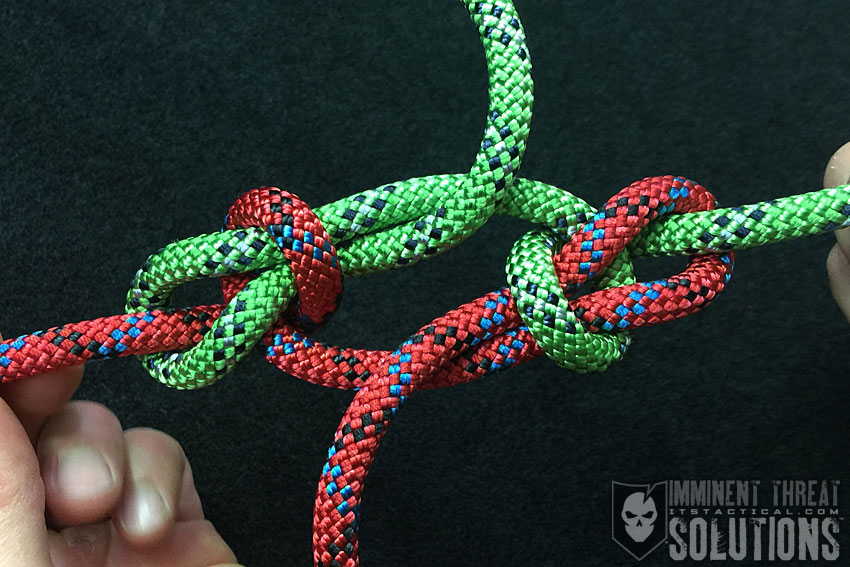

On today’s Knot of the Week in HD, I’ll be knocking off a few remaining bends with the Vice Versa and the Twin Bowline Bend. Our first bend, the Vice Versa, is perfect if you need a way to join two pieces of shock cord together, as well as some other uses I’ll address below. The Twin Bowline Bend is at the opposite end of the spectrum and more for joining large diameter line, such as cabling.
(Strength: 4/Security: 5/Stability: 3/Difficulty: 4) See below for what these ratings mean.
The Vice Versa is a lesser known bend, yet newer when it comes to knot history. It’s credited to Harry Asher from Britain and certainly has an application for the tactical industry, as it’s perfect for joining two lengths of shock cord or other bungee cordage together.
While not it’s only usage, the security of this bend is also what makes it well suited for wet conditions or slippery line that’s of similar diameter. Many bends we’ve gone over previously won’t hold under wet conditions.
(Strength: 4/Security: 4/Stability: 3/Difficulty: 4) See below for what these ratings mean.
A Twin Bowline Bend isn’t the easiest way to join two lines together, but it is one of the strongest ways to join two thick cables that can be unforgivingly inflexible. This includes large diameter wire cabling, mooring lines and towlines. The heavy-duty nature of the Twin Bowline Bend ranks high in strength and security and can even be tied at sea, just watch out for rogue waves.
Strength/Security/Stability/Difficulty
Each knot will be assigned a rating from 1-5 (1 representing the lowest score) based on the following four properties:
Strength – All knots will weaken the strength of a rope, however, there are knots that are stronger than others. The scale here will reflect how strong the rope remains with the specified knot.
Security – The security scale refers to how well the knot will stay tied, and resist coming loose under a normal load.
Stability – Stability refers to how easily the knot will come untied under an abnormal load (i.e. the knot being pulled in a direction it was not intended to) A lower score here represents instability.
Difficulty – The lower the number, the easier a knot is to tie.

Do you enjoy witty banter and nostalgic geekdom all while sipping on a fine aged scotch? Then you’ll love our podcast!

Shop the ITS Store for exclusive merchandise, equipment and hard to find tactical gear.

Discussion